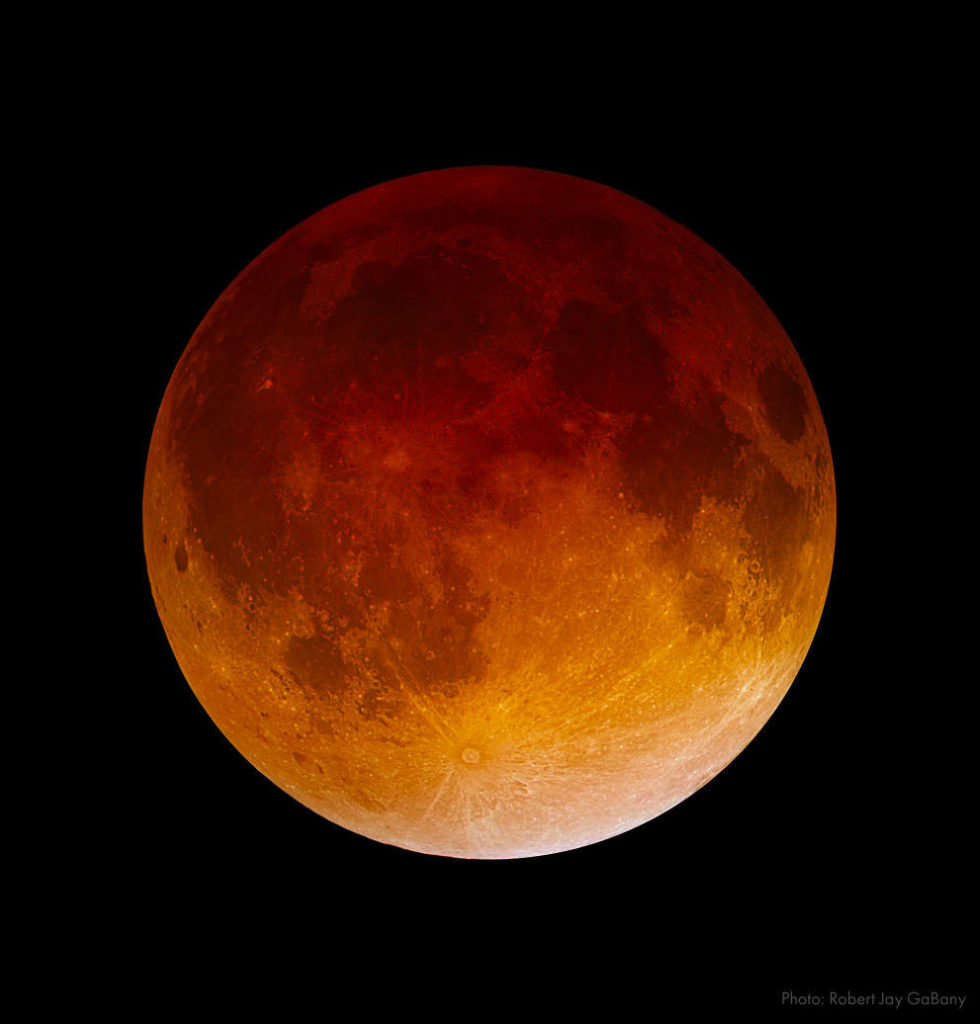
On the evening of May 15 and into the wee hours of May 16, a total lunar eclipse will grace the skies of North and South America, Europe, Africa, and parts of Asia. Read on to learn more about what makes this eclipse special, how to view it, and why you shouldn’t miss it!
1) If you live within the eclipse’s path of visibility, you can view it without a telescope.
Unlike solar eclipses or other, more distant celestial phenomena, you do not need any special equipment to view a lunar eclipse. As long as you have an unobstructed view of the night sky, you will be able to view the eclipse from start to finish with your unaided eye. If you happen to have a telescope at your disposal, you can set it up for a closer look at the changes in the Moon’s appearance as the eclipse progresses. To see if the eclipse will be viewable from your location, check out this handy eclipse map.
2) Totality will last for almost an hour and a half.
Because the Moon travels deep into the Earth’s shadow during a total lunar eclipse, the period of totality tends to be longer than that of any other type of eclipse. During this particular eclipse, totality will go on for nearly 85 minutes. This will give observers within the viewing zone plenty of time to set up telescopes, take photos, and admire the rare beauty of the Blood Moon.
3) The eclipsed Moon will take on a stunning reddish color.
Eclipses are sometimes referred to as Blood Moons or Red Moons because of the deep red color that the Moon takes on as it moves through the deepest parts of the Earth’s umbra, or shadow. This occurs because during an eclipse, the only sunlight reaching the Moon passes through Earth’s atmosphere. The Moon will appear more red depending on the amount of dust or clouds there are in Earth’s atmosphere. You may notice a phenomenon similar to this when the Moon is sitting low in the sky—you’re seeing it through a greater thickness of Earth’s atmosphere than when it’s overhead!
4) It marks the beginning of an “Eclipse Season.”
This eclipse will mark the Earth’s entry into what is referred to as an “eclipse season,” which occurs every 173 days. For between 31 and 37 of those days, the Moon is lined up perfectly to intersect the path of the Sun through our daytime sky. The result is a short season during which 2, sometimes 3, solar and lunar eclipses can occur. There will be two eclipse seasons in 2022, each bringing one lunar eclipse and one solar eclipse. The next total lunar eclipse will occur during the next season and will on November 7-8, 2022, visible from western North America. The solar eclipses of these two seasons will be partial, the first occurring on April 30, 2022, visible from parts of Chile, Argentina and Antarctica, the second occurring on October 25, 2022, visible from Europe and the Middle East.
5) You can watch it live from anywhere in the world.
Join Lowell Observatory in viewing the 2022 Total Lunar Eclipse LIVE from the Giovale Open Deck Observatory! Starting at 7:15pm PDT on Sunday, May 15, we will be streaming the eclipse using our state-of-the-art 12″ Planewave Telescope. Watch eclipse-themed presentations from members of Lowell’s superstar staff and enjoy live views of the eclipse as it approaches totality in our pristine dark skies! Learn more about this event.